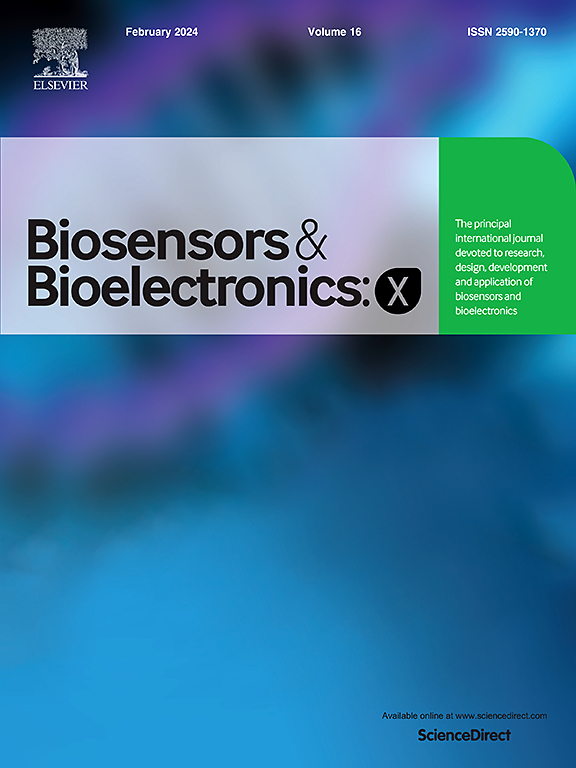Microfluidic impedance sensing distinguishes cancer cell states: A step towards point-of-care diagnostics
IF 10.61
Q3 Biochemistry, Genetics and Molecular Biology
引用次数: 0
Abstract
In this study, we employed a custom microfluidic sensor to measure the electrical impedance of cancer cells, aiming to differentiate between suspension and adherent phenotypes. We investigated three suspension cell lines—JeKo-1, MM-1R, and Maver-1—representing hematological malignancies, and two adherent breast cancer cell lines—MDA-MB-231 and MDA- MB-468. The impedance measurements revealed significant differences corresponding to the cells’ growth patterns. Suspension cells exhibited lower median impedance values compared to adherent cells, likely due to variations in cell size, complexity, and membrane properties. Suspension cells, being smaller and less structurally complex, demonstrated reduced impedance, whereas adherent cells, which are larger and form stronger surface attachments, displayed higher impedance values. These findings highlight the potential of electrical impedance as a tool for distinguishing cancer cell types. To further validate these results, we propose focusing on the transition of a single cancer cell type between adherent and suspension states, simulating in vitro cancer proliferation conditions. This approach will provide a deeper understanding of how electrical properties evolve during this transition and may offer insights into distinguishing between benign and metastatic cancers or assessing metastatic stages. The observed reduction in impedance during the adherent-to-suspension transition supports the potential diagnostic utility of this method. Overall, this study demonstrates that electrical impedance provides a rapid, label-free approach for enhancing cancer cell diagnostics based on distinct electrical characteristics.
微流控阻抗感应区分癌细胞状态:迈向即时诊断的一步
在本研究中,我们采用定制的微流体传感器来测量癌细胞的电阻抗,旨在区分悬浮型和粘附型表型。我们研究了三种悬浮细胞系- jeko -1, MM-1R和mavero -1代表血液恶性肿瘤,以及两种贴壁乳腺癌细胞系- MDA- mb -231和MDA- MB-468。阻抗测量显示了细胞生长模式的显著差异。与贴壁细胞相比,悬浮细胞表现出较低的中位阻抗值,这可能是由于细胞大小、复杂性和膜特性的变化。悬浮细胞体积更小,结构更简单,阻抗降低,而贴壁细胞体积更大,表面附着力更强,阻抗值更高。这些发现突出了电阻抗作为区分癌细胞类型的工具的潜力。为了进一步验证这些结果,我们建议关注单一癌细胞类型在贴壁和悬浮状态之间的转变,模拟体外癌症增殖条件。这种方法将更深入地了解电学性质在这种转变过程中是如何演变的,并可能为区分良性和转移性癌症或评估转移阶段提供见解。在粘附到悬浮过渡期间观察到的阻抗降低支持了该方法的潜在诊断效用。总的来说,这项研究表明,电阻抗提供了一种快速、无标记的方法,可以基于不同的电特征来增强癌细胞诊断。
本文章由计算机程序翻译,如有差异,请以英文原文为准。
求助全文
约1分钟内获得全文
求助全文
来源期刊

Biosensors and Bioelectronics: X
Biochemistry, Genetics and Molecular Biology-Biophysics
CiteScore
4.60
自引率
0.00%
发文量
166
审稿时长
54 days
期刊介绍:
Biosensors and Bioelectronics: X, an open-access companion journal of Biosensors and Bioelectronics, boasts a 2020 Impact Factor of 10.61 (Journal Citation Reports, Clarivate Analytics 2021). Offering authors the opportunity to share their innovative work freely and globally, Biosensors and Bioelectronics: X aims to be a timely and permanent source of information. The journal publishes original research papers, review articles, communications, editorial highlights, perspectives, opinions, and commentaries at the intersection of technological advancements and high-impact applications. Manuscripts submitted to Biosensors and Bioelectronics: X are assessed based on originality and innovation in technology development or applications, aligning with the journal's goal to cater to a broad audience interested in this dynamic field.
 求助内容:
求助内容: 应助结果提醒方式:
应助结果提醒方式:


